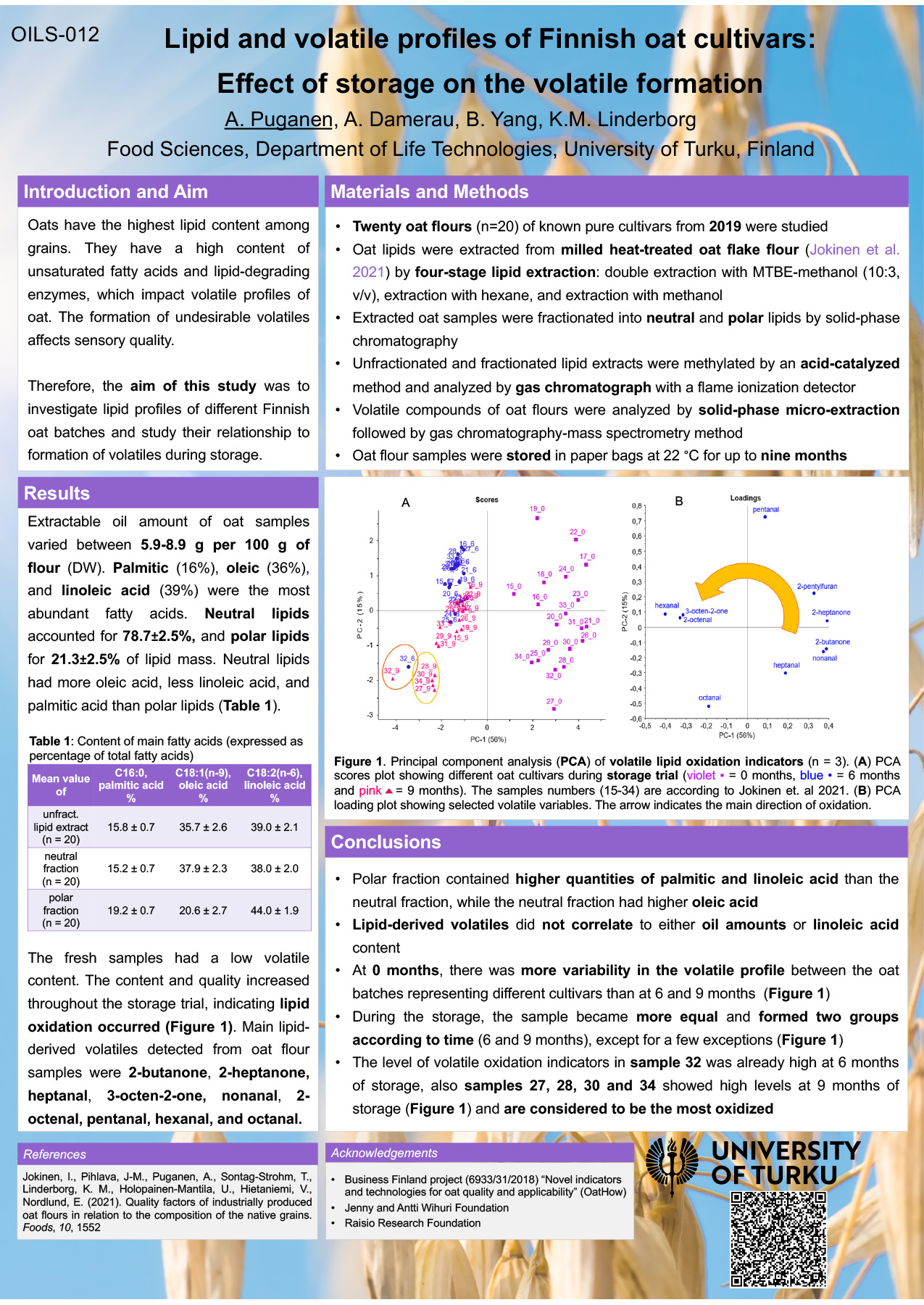Oats have the highest lipid content among grains. They have a high amount of unsaturated fatty acids and lipid-degrading enzymes, and thus lipid degradation considerably impacts oat volatiles. This study aimed to analyze the lipid profiles of different Finnish oat batches and investigate their relationships with volatile compounds, as these both can influence sensory quality.
Twenty oat flours of known pure cultivars from 2019 were studied. Oat lipids were extracted by four-stage lipid extraction and fractionated into neutral and polar lipids by solid-phase extraction. The fatty acid composition and volatile compounds were analyzed using gas chromatography with a flame ionization detector and headspace solid-phase micro-extraction with gas chromatography-mass spectrometry detection, respectively. Oat flours were stored in paper bags at room temperature for nine months.
Palmitic (16 %), oleic (36 %), and linoleic (39 %) acids were the most abundant fatty acids in unfractionated lipid extracts. The polar fraction included higher content of palmitic acid and linoleic acid than the neutral fraction, while the neutral fraction contained higher quantities of oleic acid than the polar fraction. On average, 78.7±2.5 % of lipid mass originated from neutral lipids and 21.3±2.5 % from polar lipids. The main lipid-derived volatiles detected were 2-butanone, pentanal, hexanal, 2-heptanone, heptanal, 2-pentyl furan, octanal, 3-octen-2-one, 2-octenal, and nonanal. The principal component analysis for volatiles of three storage points (0, 6, and 9 months) was studied.
